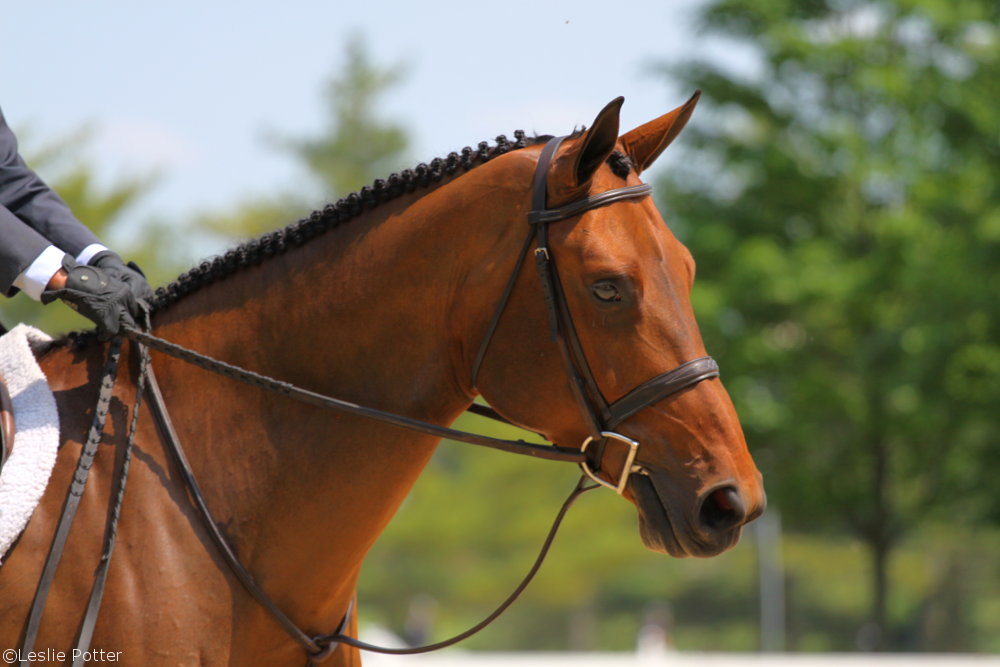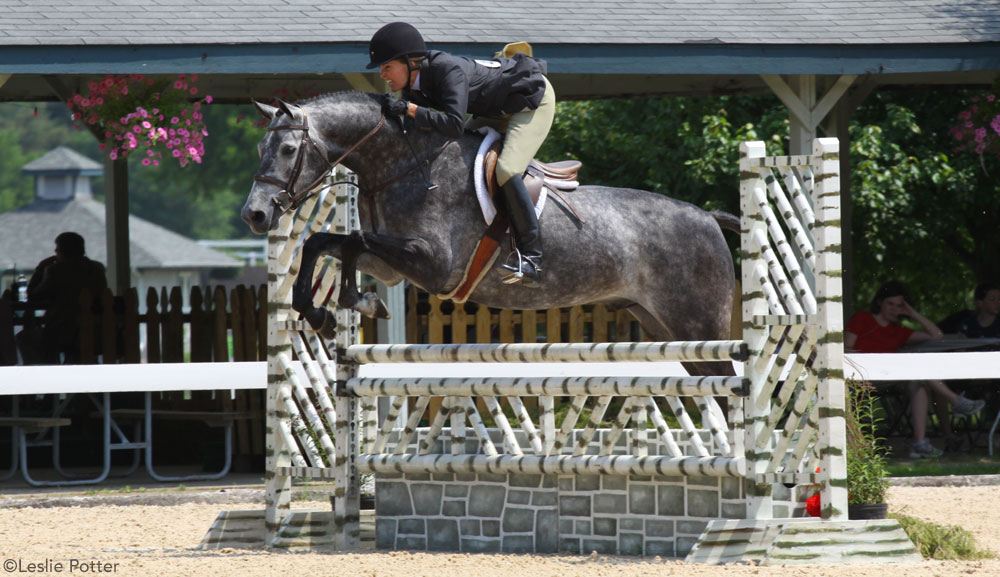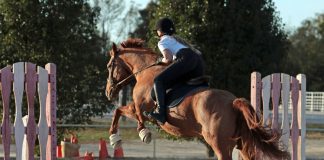
Young equine athletes seem full of such promise, offering you a chance to finally own your dream horse. Yet somewhere between Intro to Saddle 101 and Advanced Show-Ring Skills the learning curve of a young performance horse can take a nose dive. Whether it’s expressed through antics under saddle or an overall bad attitude, the message is clear: Your young horse hates his job. What went wrong?
Too Much, Too Soon
International dressage competitor Lisa Wilcox represented the United States at the Athens Olympics and was the first American to win the German Young Horse Championships. She is also a Certified Reitlehrer, or professional instructor, and over the years has seen the warning signs that convey a horse is physically overwhelmed. “Swelling or splints on the legs and soreness in the back,” are tops on her list. Then there are the changes in a horse’s mental attitude. “I look in the horse’s eyes. Are they bright and gleaming, or are they completely dull and glazed over when he sees me?”
Beyond these detrimental effects, a too-tough work program can also have consequences in the horse’s performance. It’s not hard to spot the horses that have been hurried into the show-ring.
“When it comes to a baby green hunter that’s been pushed too far too fast, the signs are pretty obvious,” explains long-time A-circuit hunter rider and trainer Lucy Stewart. From her Fox Creek Farm in Calabasas, Calif., she oversees a barn full of junior and amateur riders, along with a selection of green hunters. “Getting quick on course, rushing through the lines, those are typical symptoms. So is general anxiety, where the young horse seems worried about his job. Personally, I think another classic sign of a hunter that’s been pushed too much is problems with lead changes.”
Lucy relates how people with fancy young hunters can be too eager to head for the show-ring. Naturally, they’re excited for their prized ponies to make their debut. But since a wrong lead on course will probably mean they’re out of the ribbons, they begin to demand flying lead changes before their horses are ready.
“That’s when the holes in the training become apparent,” Lucy says.
Instead, the green hunter should be brought along slowly, advancing in fence height only when he’s comfortable and capable of tackling the more difficult courses. Beyond rushing and getting tense on course, faults in jumping style such as twisting in the air often mean that the green hunter is struggling to heave himself over the obstacle without really thinking about the mechanics of jumping. To properly educate a young hunter, Lucy comments that it’s wise to seek out horse shows that offer classes catering to the green-as-grass hunter.
“There’s no point in jumping higher just for the sake of doing it. A hunter needs to jump well,” she says.

A green hunter should advance in fence height only when he’s comfortable and capable of tackling the more difficult courses.
Lisa Wilcox also offers a game plan for bringing along a promising dressage horse. “In general, I give one year from level to level, all the while incorporating movements from the next (higher, more difficult) level in the work for the current year,” she explains.
Lisa is noted for her patience, and adds that, “The horse must be completely balanced and supple performing the movements required of him in this year’s level before he moves to next year’s level.” As for her sign that the young dressage horse is admirably progressing, she says, “In general, if my horse is performing regularly for a good 70 percent or more, at the level I am competing, then he is reassuring me that he understands, has balance and competency at the level for which he is training.”
Missing Ingredients
While an anxious, overstressed green horse might be salvaged by modifying his training program, there are cases where even that won’t make much of a difference. Despite a pedigree full of champions, tons of eye appeal and a budget-busting price tag, some horses never achieve what their owners hope for. These are the horses lacking either the talent or the temperament necessary for their chosen job. And that can be a bitter lesson in the gamble of buying a young, unproven horse.
Both Lucy and Lisa agree that despite earnest attempts to buy a dream horse, sometimes fate intervenes. Examples they offer include a young dressage horse that lacks the inherent ability to excel at upper level movements and a green hunter that jumps in really poor form. Those are the horses that need to find another career; otherwise no one is happy.
“I have to address this sort of problem on a case-by-case basis,” Lucy Stewart says. It’s a tough situation for the trainer. “I talk with my client about riding goals, time constraints—how much time he or she is willing to put into this particular horse to see if he can do the job, and about finances. Showing is a very expensive sport, and it’s incredibly tough in the junior and amateur adult hunter divisions. Is it going to be worthwhile to compete when you don’t have much of a chance of being successful?”
Even with incomparable talent, performance horses must also possess a certain temperament. They have to be adaptable to the hectic environment of a horse show and sociable with their fellow equines. Their temperament must also be compatible with their job. That’s especially true when the majority of hunter and dressage riders are amateurs, who both want and need a forgiving, compliant mount.
“I know that you can’t always tell the temperament in a very green horse, but I don’t believe you can ever take a hot horse and make him into a quiet hunter,” Lucy says. “Now, some of the time some of what seems to be ‘hotness’ is due in part to the green horse’s environment. If a young horse is kept in a stall for 22 or 23 hours a day, then taken out only to be trained, he can definitely develop behavior problems. That’s why I’m a big believer in trail riding and turn-out time so that the green horse has a chance to just be a horse.” Nonetheless, Lucy states unequivocally, “Temperament is the most important aspect in buying a young hunter prospect.”
What can be done when temperament or talent prevents a green horse from blossoming into the horse of a lifetime? First, the horse’s true potential needs to be evaluated. The quick, exuberant hunter may be a standout as a jumper. A horse that flunks out of hunter training could also have a career as a medal class mount since mediocre jumping style isn’t considered in equitation classes. And a dressage horse that can’t earn the scores to move up through the levels might have just the right mix of athleticism and bravado to make the perfect show jumper or event horse. Next, a professional competent in the riding discipline the horse seems to fit should be consulted. If they like the horse, they can act as an agent or at least as a reference for the horse’s attributes. Then ads, videos and photos showcasing what the horse does well can hit the market. The horse should be presented as a diamond in the rough, one eager for a new career, not as a washout. Someone else may embrace the very traits the previous owner disdained. Although the tactics may seem dispassionate, finding a new home for a horse that’s mismatched to his owner is better than holding on to a grumpy horse that’s a constant source of frustration.
Lisa Wilcox doesn’t hesitate when advising what to do. In equestrian sport, the horse-rider bond is vitally important, so she says straight out, “Sell the horse and find a more suitable partner. Both you and the horse will be happier in the long run.”
When is the best time to start training a young horse?
Why are some horses Forever Green?
Cindy Hale is the author of Riding for the Blue and A Passion for Horses.






There are some very good points in this article but I do worry about a few. There seems to be the desire for many riders to expect the impossible from their horses in a very short time and then they are disappointed and horses are seen as very disposable items. It is hard to work with what you’ve got sometimes but I think the fault is more often with the owner. A once in a lifetime horse is just that. You aren’t going to find many of them. And green horses can turn into many types of athletes. You have to expect to invest many years of training and accept your horse for what he is, not what you dream. Just my two cents not very well elocuted.
lucy stewart is an abusive horse trainer. she should not be training horses any more. She once gave my horse a black eye. How could you publish an article by this crazy lady. She an abusive person. She has kicked my horse in the stomach. She has done horrible things.
.
wow michelle, i’m so sorry she did that 2 your horse! she’s probably a 2-sided(or more) person. i’ve seen horse people that seem picture-perfect and kind and loving towards horses but when no1 is watchin, they can be horrible 2 animals. well, her article was good i think.
Lucy is not abusive. Clearly, you’re a fool
Great information
this article was great
I am working with a young horse right now and he is super obvious when he has had too much. If as a professional you can’t see this you are crazy and people need to stop treating horses like machines and more as an individual who might have a bad day and need to be treated with respect.
I have to disagree with the saying that you cant make a hot horse into a hunter. I bought an OTTB 5 years old from someone who does hunters. she sold him because he was to fast and hot. After owning him for a few weeks he isnt hot at all. My trainer even said that he has the perfect hunter trot.
Great article. The key is finding something that your horse both enjoys and is good at. When I recieved my mare, they had been doing hunters with her but it was obvious she was not happy or comfortable with the hunter ways. So, after doing some experimenting, I found that she was the perfect dressage mount. I see riders all the time trying to make their horse into something their not. It’s amazing how if you can just find something that they enjoy, you will end up enjoying it just as much as them because they give it their all. Never in a million years would I have thought I wanted to do dressage, but after seeing how much more comfortable my mare was doing it, I can honestly say I’ve fallen in love with it and my hunter days are over.
This will be helpful in training a new green mare project pony!!!
Thanks
Excellent article.
Excellent article